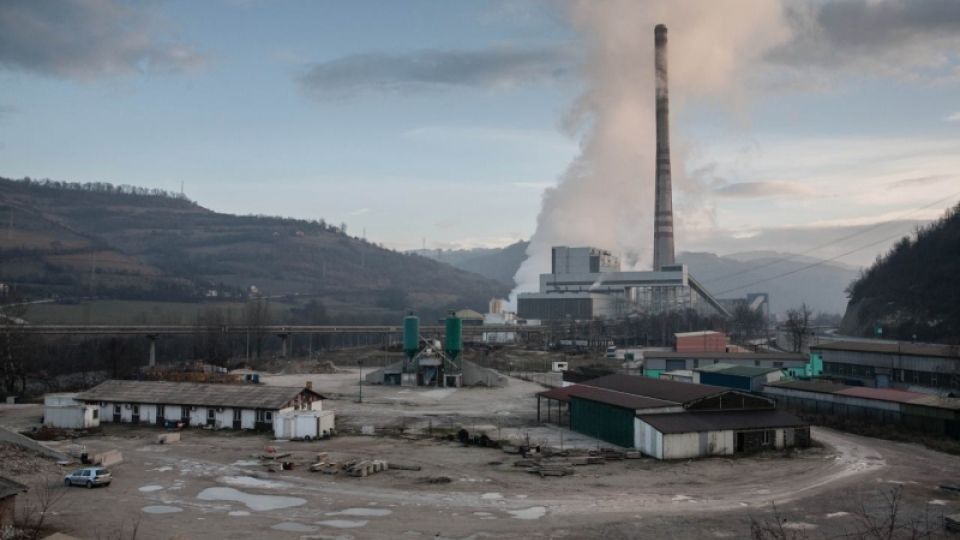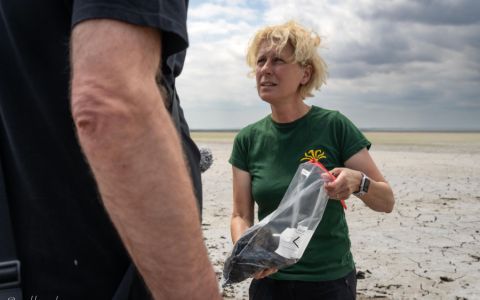Today, non-governmental organizations published a list of the top ten of the biggest polluters of Bosnia and Herzegovina. According to them, the environment in recent years has been mostly contaminated by the steelworks of ArcelorMittal in Zenica, the coal-fired power plants of state-owned Elektroprivreda, and the cement factory in Kakanj of the German corporation Heidelberg. The database of all industrial facilities exceeding safe threshold limits valid in the EU (1) is now available on the website www.eko.ba. The information is based on the official data of both entities (2).
"The database proceeds from the official data reported to national authorities by the industrial factories themselves. They are responsible for the truthfulness of figures. In compliance with the legal obligations of our country towards the citizens as well as to the European Union, the data should have been published on the Internet a long time ago. It is a big question why the authorities have not done this yet. Instead of further negotiations, we decided to act and publish the available data in a clear and transparent form," says Samir Lemeš, the chairman of Eko Forum Zenica.
"Citizens can now find the data for the years 2011 to 2013 on the Internet. More recent figures will be available as soon as we succeed to gain the information from the entity authorities and analyse it. For a better overview, we decided to publish only the data of factories that exceed the safe threshold limits valid in the EU," says Viktor Bjelić, the chairman of Center for Environment from Banja Luka.
Non-governmental organization Arnika from the Czech Republic participated in creating the online database as well as by compiling the ten biggest polluters of Bosnia and Herzegovina. In the Czech Republic, such information is regularly published by the Ministry of the Environment since 2005.
"We sorted the poorly arranged data into groups of chemicals according to their negative effects. So in our database, you can find the summarized overview of carcinogenic substances, chemicals affecting reproduction, and seven others groups. An interactive map helps everybody to find the data relevant to their city or region," explains Milan Havel, the expert on toxics and waste from Arnika.
Values exceeding safe threshold limits valid in the EU for the current period are related to only 32 installations in Bosnia and Herzegovina and cover only 14 substances (3). It is interesting that none of these industrial plants with excessive pollution are located in the area of the Republika Srpska. For comparison: In the Czech Republic, 1,657 installations reported emissions in 2013 These reports included releases of 35 pollutants to the air, 32 to the water, 14 to the soil, transfers of 32 substances in wastewater, and transfers of 25 substances in waste. This does not mean that the situation in Bosnia and Herzegovina is better than in the Czech Republic, but it rather indicates that the Bosnian data is incomplete. It is known that many factories did not report their releases of dangerous substances because the whole system of integrated pollution prevention does not work yet. In the Czech Republic, all factories report the emissions when they exceed the threshold limit. Transfers of these substances in waste is reported as well. In addition to reports mandatory in the whole EU, the Czech factories also report styrene and formaldehyde emissions (4).
Comments for the editors:
1/ The database of the biggest polluters of Bosnia and Herzegovina considers the safe threshold limits according to Annex II of Regulation No. 166/2006 of the European Parliament and of the Council.
2/ The competent authorities are the Ministry of the Environment and Tourism (in the case of the Federation of Bosnia and Herzegovina) and the Hydro-meteorological Institution (in the case of the Republika Srpska). Bosnia and Herzegovina unfortunately does not have an uniform system for reporting pollutant emissions - each entity has its own system.
3/ The pollutant register of Bosnia and Herzegovina include emissions of the following substances: arsenic, cadmium, lead, mercury, benzene, polycyclic aromatic hydrocarbons (PAH), hydrochlorofluorocarbons (HCFC – only 1 entry – HCl), sulphur oxides (SO2/SOX ), nitrogen oxides (NO2/NOX), carbon monoxide (CO), methane, carbon dioxide (CO2), and particulate matter smaller than ten micrometres (PM10).
4/ The data for the Czech Republic are publicly available on: http://www.irz.cz







